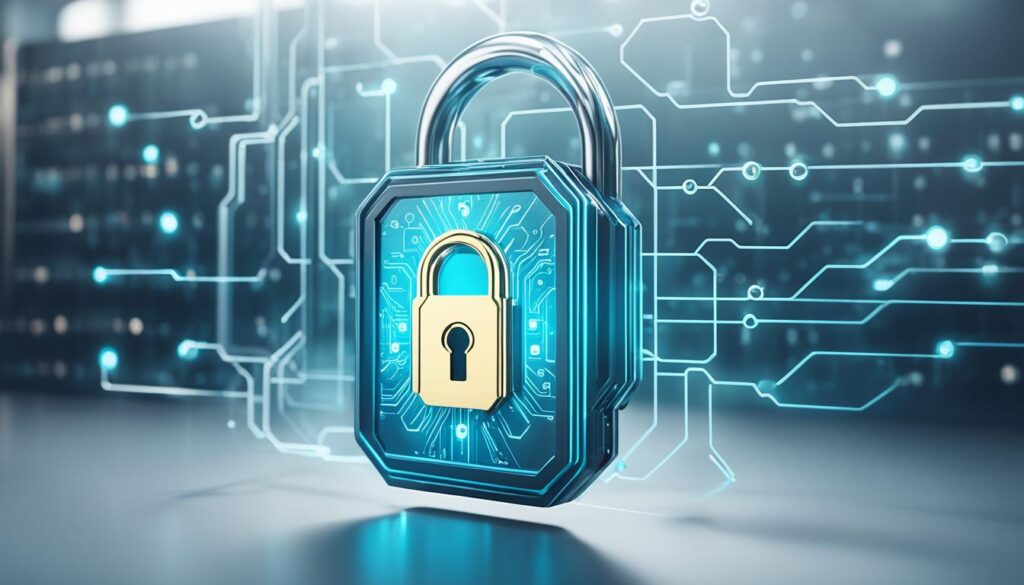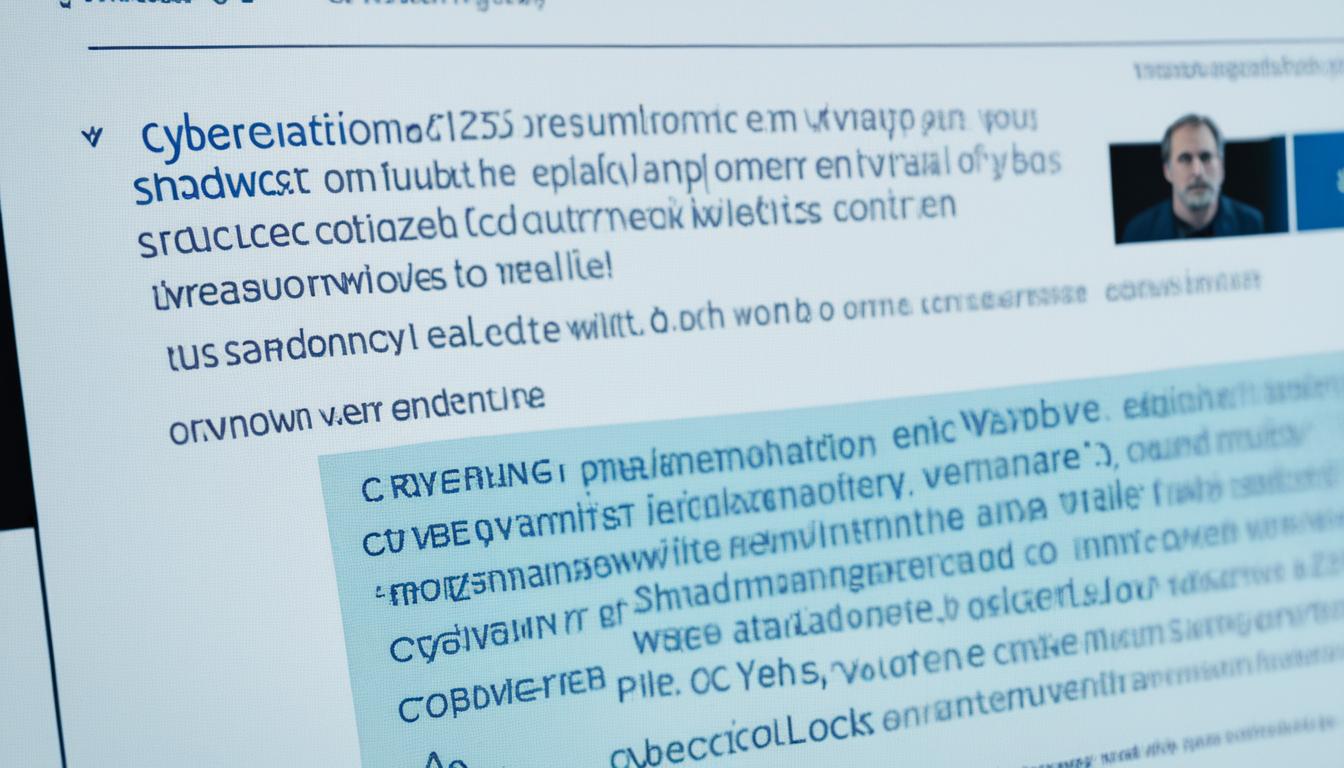Web 3.0, the latest evolution of the internet, is revolutionizing the way we interact online and has a profound impact on privacy and data security. This article explores the challenges and opportunities that arise with this new technological paradigm, focusing on the intersection of Web 3.0 and the protection of personal information. By leveraging cutting-edge technologies like blockchain, artificial intelligence, and decentralized identification systems, Web 3.0 aims to create a more secure and user-centric digital environment.
Key Takeaways:
- The Impact of Web 3.0 on Privacy and Data Security
- Data Security Risks in Web 3.0
- Privacy and Data Protection in Web 3.0
- Web 3.0 Technologies and Privacy
- Securing Data in Web 3.0
The Evolution of the Internet: From Web 1.0 to Web 3.0
The internet has undergone a remarkable evolution since its inception, shaping the way we live, work, and communicate. Let’s take a journey through its transformative phases: Web 1.0, Web 2.0, and the promising era of Web 3.0.
Web 1.0: The Birth of the Internet
Web 1.0, often referred to as the “read-only” web, emerged in the early 1990s. It was a static and one-way communication channel where users could only consume information. Websites were primarily composed of simple HTML pages and lacked interactive features. The focus was on providing information rather than facilitating collaboration or user-generated content.
During this period, concerns about data privacy were relatively minimal as the internet was primarily used for disseminating information on a broad scale. However, as the internet gained popularity, new challenges started to arise.
Web 2.0: The Rise of Interactivity
Web 2.0, which gained prominence in the early 2000s, marked a significant shift in the internet landscape. It introduced interactivity and user-generated content, transforming the internet into a dynamic and participatory platform.
Web 2.0 technologies enabled the creation of social media platforms, blogs, and wikis, empowering users to share their thoughts, collaborate, and engage with content in real-time. As users became more involved, data privacy concerns surfaced. The vast amounts of personal information shared online raised questions about the protection and misuse of data.
“Web 2.0 revolutionized the way we interact with the internet, but it also highlighted the need for enhanced data privacy measures.”
Web 3.0: Embracing Intelligence and Personalization
Now, we find ourselves on the cusp of the Web 3.0 era. Web 3.0 is characterized by its intelligence, personalization, and focus on user-centric experiences. It leverages cutting-edge technologies such as blockchain, artificial intelligence, and data analysis to create a more intelligent internet.
Web 3.0 aims to provide personalized and tailored experiences to users, utilizing data-driven insights to offer customized content and recommendations. However, as the internet becomes more intelligent and interconnected, the need to address data privacy and security concerns becomes even more critical.

The Future of the Internet
As we continue our journey into the digital age, it is clear that the evolution of the internet is both exciting and challenging. Web 3.0 holds immense potential to revolutionize the way we interact online. However, it is essential to strike a balance between innovation and safeguarding data privacy in this rapidly evolving landscape.
The next sections of this article will delve deeper into the implications of Web 3.0 on privacy and data security, exploring technologies such as self-sovereign identity (SSI), decentralized identity, and distributed storage solutions. By understanding these concepts, we can navigate the web’s future while safeguarding our personal information.
Understanding Self-Sovereign Identity (SSI)
Self-Sovereign Identity (SSI) is a vital aspect of Web 3.0, empowering individuals with complete control over their digital identities. Through SSI, users can effectively manage and securely store their identity information on decentralized platforms powered by blockchain technology. This innovative approach ensures both privacy and autonomy for users, as they have the authority to determine who can access their data.
By leveraging blockchain technology, SSI provides a secure and transparent foundation for verifying and storing identity data. Unlike traditional identity verification methods that often require unnecessary exposure of personal information, SSI enables secure identity verification while minimizing the risks associated with data breaches and identity theft.
With SSI, individuals gain the ability to navigate the digital landscape with confidence, knowing that their personal information remains under their control. This paradigm shift in identity management not only improves data privacy but also fosters more secure and trustworthy online interactions.

With Self-Sovereign Identity (SSI), individuals are no longer reliant on centralized authorities or third-party intermediaries to manage their digital identity. Instead, SSI empowers users to take charge of their own data, ensuring a more secure and privacy-focused digital experience.
The Evolution of Digital Identity and KYC
Digital identity and Know Your Customer (KYC) processes have experienced remarkable advancements in recent years, thanks to the rapid development of blockchain technology and biometric verification.
Blockchain technology plays a crucial role in ensuring secure and verifiable digital identities. By storing identity information on a decentralized ledger, blockchain eliminates the need for centralized authorities, reducing the risks of data breaches and unauthorized access. This innovation not only enhances the security of individuals’ personal information but also streamlines identity verification processes.
Biometric verification methods, such as facial recognition, have emerged as efficient and reliable means of establishing identity. Leveraging biometric data, KYC processes can now be expedited, providing a seamless user experience while maintaining robust security measures.
To facilitate global transactions and promote interoperability, global standardization efforts are underway. Establishing a set of common standards ensures consistency in identity verification processes, reduces compliance costs, and enables smoother cross-border transactions.
However, the adoption of digital identity solutions is not without risks. The very nature of storing personal information digitally opens the door to potential data breaches and misuse. To mitigate these risks, it is vital to implement robust controls and prioritize user privacy and consent. Data encryption, secure storage, and regular audits are among the key measures to safeguard digital identities.
In conclusion, the evolution of digital identity and KYC holds significant promise in enhancing security and streamlining processes. Blockchain technology and biometric verification offer unprecedented levels of trust and efficiency. Nevertheless, it is crucial to remain vigilant and address the risks associated with digital identity, ensuring that privacy and security remain paramount in our interconnected world.
Decentralized ID and Distributed Storage Solutions
Decentralized identity (DID) systems and distributed storage solutions are revolutionizing the way we engage in digital interactions, prioritizing enhanced data security and privacy. With decentralized identity, users can take ownership and full control of their digital identities, eliminating the need for reliance on centralized authorities. This empowerment ensures privacy-focused digital interactions, where individuals have complete autonomy over their personal information.
Distributed storage systems, on the other hand, offer a robust solution for data storage and availability. By distributing data across multiple locations, these systems enhance data security, scalability, and fault tolerance. As a result, users can securely store their information in a decentralized manner, reducing the risks associated with centralized storage.
Decentralized Identity (DID)
Decentralized identity (DID) systems leverage blockchain technology to provide secure and privacy-preserving digital identities. By utilizing blockchain’s immutable and transparent nature, DID enables users to have complete control over their personal data. They can selectively disclose information, establishing trust and authenticity without compromising their privacy.
One of the key advantages of DID is the elimination of reliance on centralized authorities for identity verification. Instead, users can independently manage and verify their identity information, reducing the risk of data breaches and unauthorized access. DID systems pave the way for privacy-focused digital interactions, where individuals can interact with confidence, knowing their personal information is secure.
Distributed Storage
Distributed storage solutions play a critical role in ensuring data availability, scalability, and security in Web 3.0. Unlike traditional centralized storage, these systems store data across a network of nodes, ensuring redundancy and fault tolerance. Even if one node fails, the data remains accessible from other nodes, enhancing data availability and reducing the risk of data loss.
Furthermore, distributed storage systems prioritize data security by leveraging blockchain technology. With its consensus mechanisms and encryption capabilities, blockchain ensures the integrity and confidentiality of stored data. This enhanced data security provides users with peace of mind, knowing that their information is protected against unauthorized access and tampering.
Decentralized identity and distributed storage solutions are driving the shift towards privacy-focused digital interactions, where individuals have greater control over their personal information. By leveraging blockchain technology and distributed networks, these solutions offer enhanced data security, allowing users to interact and transact online with confidence.
Enhanced Data Security and Privacy-Focused Digital Interactions
By combining decentralized identity and distributed storage, Web 3.0 is establishing a new era of privacy-focused digital interactions. Users have the power to own and manage their digital identities, ensuring privacy, and control over their personal information. Simultaneously, distributed storage systems protect stored data from unauthorized access, providing enhanced data security.
Through these innovative technologies, Web 3.0 is shaping a digital landscape that prioritizes user privacy and data security. As individuals embrace decentralized identity and distributed storage solutions, they can enjoy the benefits of secure and efficient digital interactions, where their personal information remains private and protected.
| Advantages of Decentralized ID (DID) | Advantages of Distributed Storage |
|---|---|
| 1. Enhanced privacy and control over personal information | 1. Improved data availability and fault tolerance |
| 2. Reduced reliance on centralized authorities for identity verification | 2. Enhanced data security and protection against unauthorized access |
| 3. Selective disclosure of personal information, establishing trust | 3. Scalable and flexible storage infrastructure |
| 4. Mitigation of data breach risks and identity theft | 4. Redundancy for data backup and disaster recovery |
Decentralized identity and distributed storage solutions are pivotal in ushering in a new era of privacy-focused digital interactions. By embracing these technologies, users can regain control over their personal information while benefiting from secure and efficient online experiences.

Togggle KYC: A Paradigm Shift in Identity Verification
Togggle KYC is revolutionizing the world of identity verification through its innovative use of decentralized and distributed technologies, such as blockchain. By harnessing the power of these cutting-edge solutions, Togggle KYC offers secure and privacy-focused identity verification processes that prioritize user control and data protection.
Traditional identity verification systems often rely on centralized authorities to store and manage user data, introducing vulnerabilities and privacy concerns. Togggle KYC takes a different approach by leveraging decentralized identity systems and distributed storage. This ensures that users have greater control over their personal information, mitigating the risk of unauthorized access or data breaches.
Decentralized identity systems based on blockchain technology provide a secure and transparent foundation for identity verification. Users can verify their identity without compromising their privacy, as they choose who has access to their information. This empowers individuals to maintain ownership of their personal data, while also enabling the seamless and efficient verification processes necessary for various online services and platforms.
Furthermore, Togggle KYC’s use of distributed storage solutions ensures enhanced data security. By storing data across multiple locations, the platform enhances data availability, scalability, and fault tolerance. This approach reduces the risk of data loss and ensures that user information is protected even in the event of a localized system failure.
This new paradigm in identity verification positions Togggle KYC at the forefront of secure and transparent KYC processes. By embracing decentralized identity systems and distributed technologies, Togggle KYC sets a new standard for privacy-focused identity verification, offering users a secure and seamless experience.
Explore the table below for a comprehensive overview of the features and benefits of Togggle KYC:
| Features | Benefits |
|---|---|
| Decentralized identity verification | Enhanced privacy protection and control |
| Blockchain technology | Secure and transparent identity verification processes |
| Distributed storage solutions | Enhanced data security and availability |
| Seamless and efficient verification processes | Streamlined user experience |
| User-centric approach | Empowerment and ownership of personal data |

Conclusion
Web 3.0 is revolutionizing the digital landscape, ushering in a new era of personalized experiences and intelligent technologies. However, as we embrace these advancements, we must also address the challenges they present in terms of privacy and data security.
With the rise of decentralized identity systems, individuals now have the potential to regain control and ownership over their personal information. Platforms like Togggle KYC offer secure and transparent identity verification processes, built on decentralized and distributed technologies like blockchain. These innovations pave the way for a future where users have greater agency in safeguarding their data.
While Web 3.0 holds promise, it is essential to address the risks and challenges associated with this paradigm shift. Robust measures must be put in place to protect against data breaches and misuse of personal information. By prioritizing strong security controls and user-centric privacy policies, we can create a secure and trustworthy digital environment in the age of Web 3.0.
FAQ
What is Web 3.0 and how does it impact privacy and data security?
Web 3.0 is the latest evolution of the internet, powered by technologies like blockchain and AI. It aims to create a more secure and user-centric digital environment. While it presents opportunities for improved privacy and data security, it also raises concerns due to more dynamic and personalized user interactions.
What were the previous versions of the internet?
The previous versions of the internet were Web 1.0 and Web 2.0. Web 1.0 was a passive experience for users, while Web 2.0 introduced interactivity and user-generated content. However, Web 2.0 also raised concerns regarding data privacy.
What is Self-Sovereign Identity (SSI) and what role does it play in Web 3.0?
SSI is a concept in Web 3.0 that allows individuals to have full control over their digital identities. It enables users to manage and store their identity information on decentralized platforms like blockchain, ensuring privacy and autonomy.
How does blockchain technology improve data privacy and secure identity verification?
Blockchain provides a secure and transparent foundation for verifying and storing identity data. It allows users to determine who has access to their information, reducing the risks associated with data breaches and identity theft.
What advancements have been made in digital identity and Know Your Customer (KYC) processes?
Digital identity and KYC processes have evolved through advancements in blockchain technology and biometric verification. These technologies ensure secure and verifiable identity information, streamlining identity verification processes and reducing compliance costs.
What are the risks associated with digital identity solutions in Web 3.0?
The adoption of digital identity solutions comes with risks such as data breaches and misuse of personal information. Implementing robust controls and prioritizing user privacy and consent are crucial in mitigating these risks.
How do decentralized identity (DID) systems and distributed storage enhance privacy in Web 3.0?
DIDs enable users to own and control their digital identities without relying on centralized authorities. Distributed storage systems enhance data availability, scalability, and fault tolerance. These technologies empower users with greater control and ownership over their personal information.
Can you provide an example of a platform that revolutionizes identity verification in Web 3.0?
Togggle KYC is a platform that leverages blockchain and decentralized technologies to offer secure and privacy-focused identity verification processes. It enables users to have control over their personal information and ensures transparent KYC procedures.
What are the challenges and opportunities with regard to privacy and data security in Web 3.0?
Web 3.0 presents both challenges and opportunities for privacy and data security. While it offers a more personalized and intelligent digital landscape, there are concerns regarding data privacy. The emergence of decentralized identity systems, distributed storage solutions, and platforms like Togggle KYC provide opportunities for greater control and ownership over personal information, but it is crucial to address associated risks and challenges.








